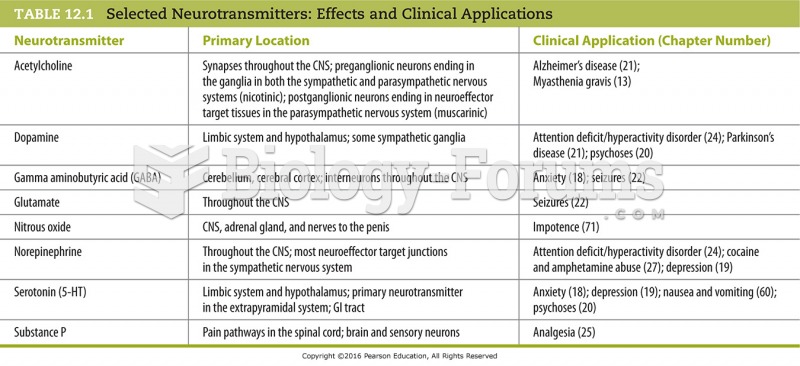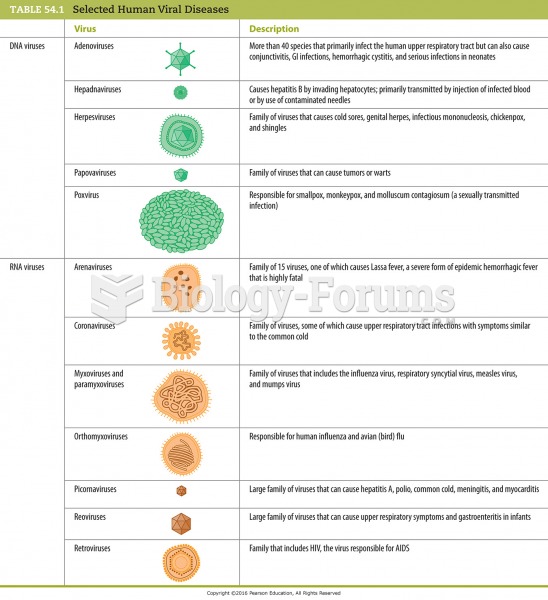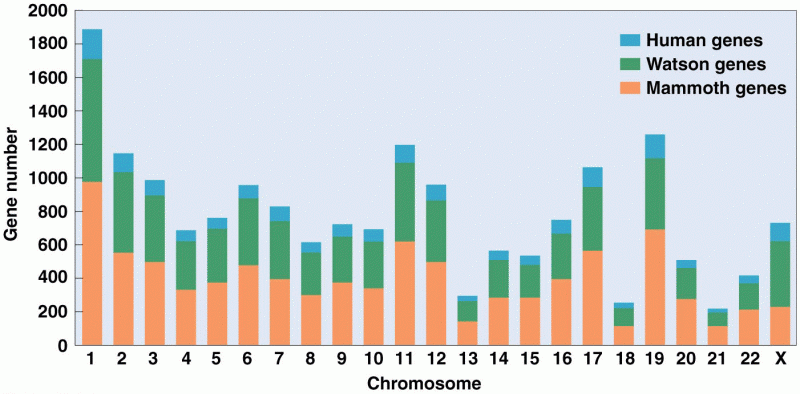|
|
|
Did you know?
Bacteria have been found alive in a lake buried one half mile under ice in Antarctica.
Did you know?
By definition, when a medication is administered intravenously, its bioavailability is 100%.
Did you know?
Illicit drug use costs the United States approximately $181 billion every year.
Did you know?
Drying your hands with a paper towel will reduce the bacterial count on your hands by 45–60%.
Did you know?
Cyanide works by making the human body unable to use oxygen.







